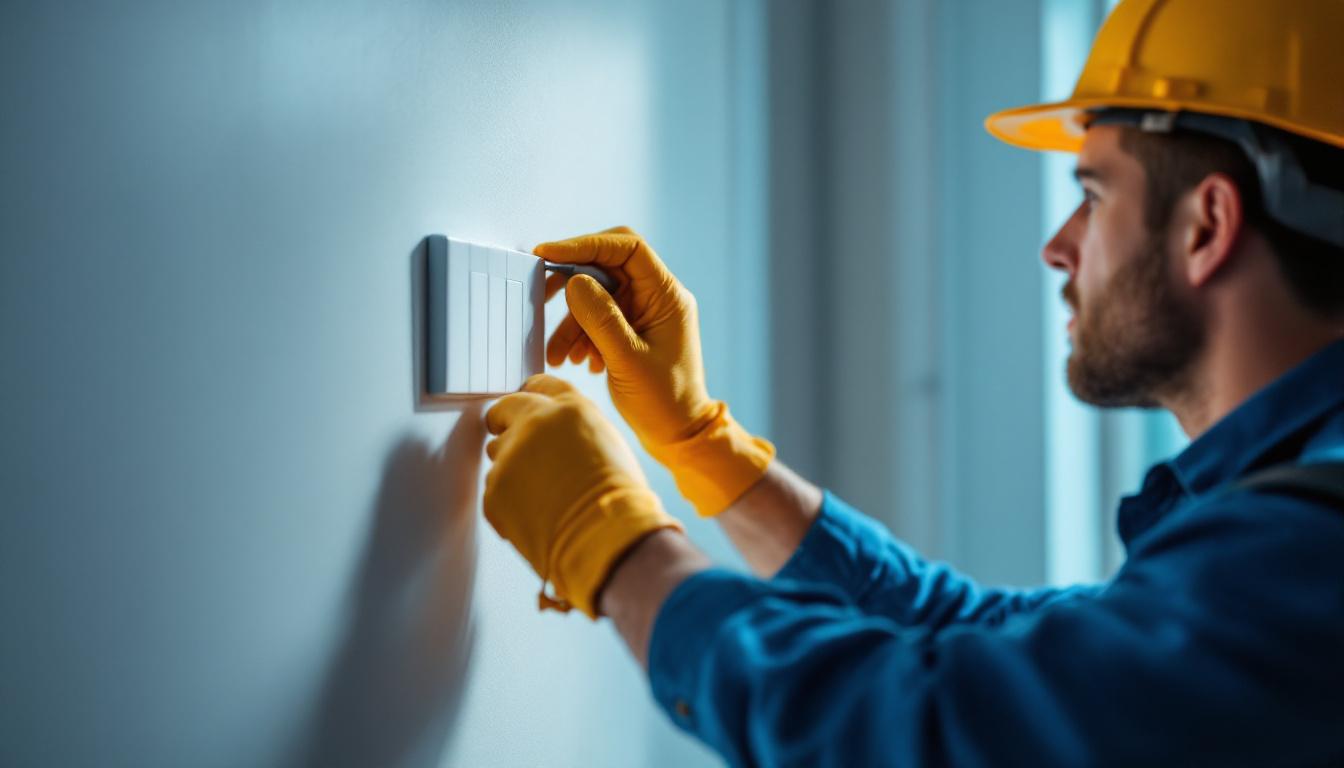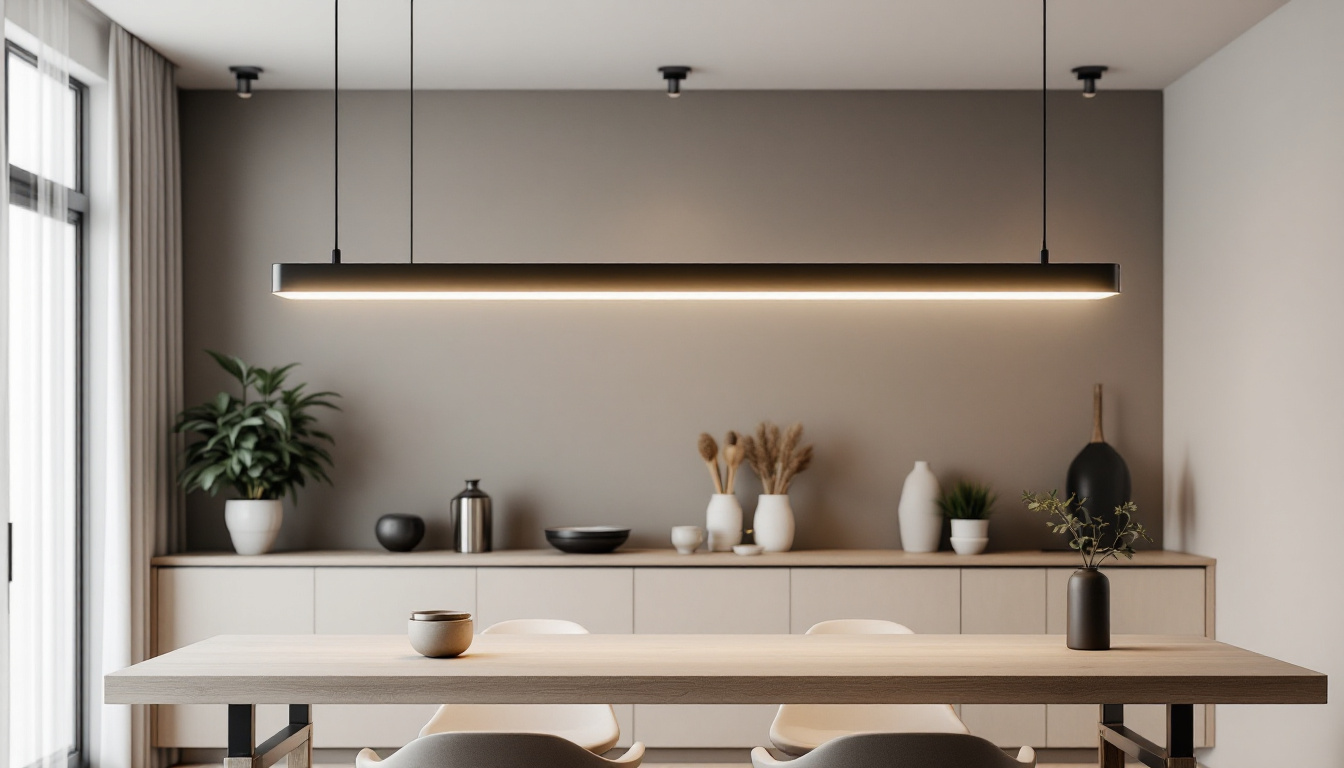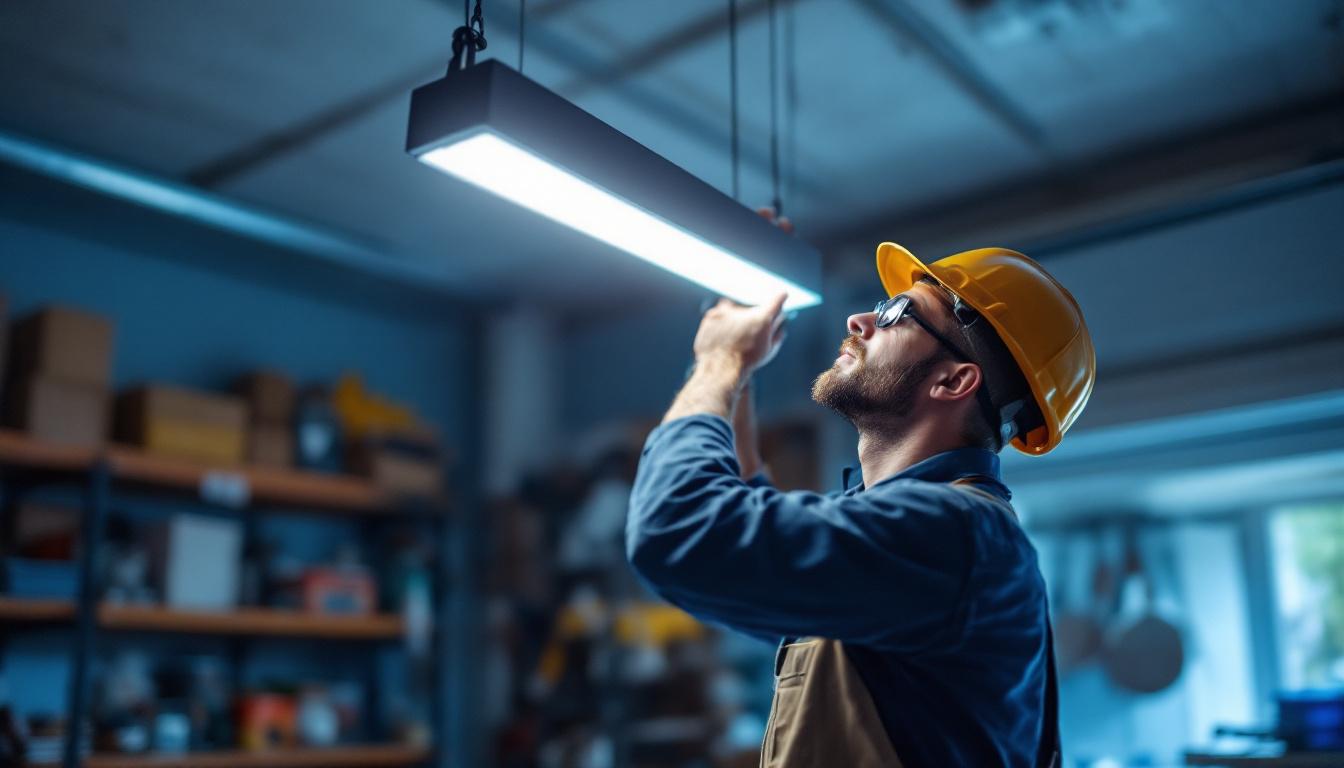
As a lighting contractor, understanding the intricacies of three-way wall switches is crucial for ensuring that your installations are both functional and safe. These switches allow for controlling a single light fixture from two different locations, making them ideal for hallways, staircases, and large rooms. However, there are common pitfalls that can lead to complications during installation and operation. This guide aims to highlight these mistakes and provide practical solutions to help you enhance your skills and deliver high-quality work.
Before diving into the common mistakes, it’s essential to grasp how three-way switches operate. Unlike standard single-pole switches, three-way switches do not have an on/off position. Instead, they work in tandem with another three-way switch to control the same light fixture. This setup involves a traveler wire that connects the two switches, allowing for seamless control from both locations. This feature is particularly useful in larger spaces or hallways where multiple entry points exist, enabling users to turn lights on or off from either end.
A typical three-way switch setup includes two switches and a light fixture. Each switch has three terminals: one common terminal and two traveler terminals. The common terminal connects to the power source or the light fixture, while the traveler terminals connect to the other switch. Understanding these components is vital for troubleshooting and ensuring proper installation. Additionally, it’s important to note that three-way switches can come in various designs, including toggle, rocker, and smart switches, each offering unique features such as dimming capabilities or remote control via smartphone apps.
There are various wiring configurations for three-way switches, including the “switch leg” and “power at switch” methods. The choice of configuration can impact the complexity of the installation and the ease of troubleshooting later. Familiarizing yourself with these configurations will help you avoid confusion during the installation process. For instance, in the “switch leg” configuration, the power source is connected directly to the light fixture, while the switch serves as a control point, creating a more straightforward wiring path. Conversely, the “power at switch” method allows for greater flexibility in circuit design but may require more intricate wiring, making it essential to carefully plan your layout before starting the installation.
Even seasoned contractors can fall into the trap of making mistakes when installing three-way switches. Below are some of the most common errors and how to avoid them.
One of the most frequent mistakes is wiring the switches incorrectly. This can lead to malfunctioning switches or, worse, electrical hazards. Always double-check your wiring against the schematic before finalizing the installation. It’s advisable to use color-coded wires and label them clearly to avoid confusion.
Additionally, ensure that the common terminal is correctly connected to either the power source or the light fixture. A common error is mistakenly connecting traveler wires to the common terminal, which can prevent the light from functioning correctly. To further mitigate this risk, consider using wire connectors that are easy to identify and manipulate, as this can help reduce the chances of making a mistake during the wiring process.
Grounding is a critical aspect of electrical installations that is often overlooked. Failing to connect the ground wire can lead to safety hazards, including electrical shocks. Always ensure that the ground wire is securely connected to each switch and the junction box. This not only protects the installation but also complies with electrical codes.
Using a multimeter to test the ground connection after installation can provide an extra layer of safety assurance. This simple step can save you from potential liability issues in the future. Additionally, consider using ground fault circuit interrupters (GFCIs) in areas prone to moisture, as they provide an extra level of protection against electrical shock, ensuring the safety of both the installation and the occupants.
Proper labeling of wires and switches is essential for future maintenance and troubleshooting. Many contractors skip this step, assuming they will remember the configuration. However, as time passes, memory can fade, leading to confusion during repairs or modifications.
Take the time to label each wire and switch clearly. This practice not only aids in future troubleshooting but also enhances the professionalism of your work. Clients will appreciate the attention to detail, and it can lead to repeat business and referrals. Furthermore, consider creating a simple wiring diagram that can be left with the homeowner. This diagram can serve as a handy reference for any future electrical work, making it easier for both you and any other contractors who may work on the system later on.
To avoid the common mistakes outlined above, it is beneficial to adopt best practices during installation. These practices can streamline your workflow and improve the quality of your installations, ultimately leading to greater customer satisfaction and repeat business.
Investing in high-quality switches and wiring can significantly reduce the likelihood of issues arising from poor materials. Cheaper components may save money upfront but can lead to failures that require costly repairs down the line. Always opt for reputable brands that meet safety standards.
Additionally, ensure that the switches are rated for the load they will control. Using switches that can handle more than the required load can prevent overheating and extend the lifespan of the installation. For instance, selecting switches with higher amperage ratings not only safeguards against potential overloads but also provides peace of mind to homeowners who rely on these systems daily. Furthermore, consider the environmental conditions where the installation will take place; for example, materials designed for outdoor use should be weather-resistant to withstand the elements, ensuring durability and reliability.
Each region has specific electrical codes that must be adhered to during installations. Familiarizing yourself with these codes is essential for ensuring compliance and safety. Failure to follow local regulations can lead to fines and may even jeopardize your license.
Regularly reviewing the National Electrical Code (NEC) and local amendments can keep you informed about any changes. Staying updated not only protects your business but also enhances your reputation as a knowledgeable contractor. Additionally, participating in local workshops or training sessions can provide insights into best practices and emerging technologies in the field. Networking with other professionals can also lead to valuable discussions about code interpretations and innovative solutions to common installation challenges.
After completing the installation, it is crucial to conduct thorough testing of the system. This includes checking the functionality of each switch, ensuring that the light fixture operates correctly from both locations, and verifying that there are no loose connections.
Using a multimeter can help identify any electrical issues that may not be immediately apparent. Testing should be a standard part of your installation process, ensuring that your work meets the highest standards of quality and safety. Additionally, consider implementing a checklist for your testing process, which can serve as a useful tool to ensure that no steps are overlooked. Documenting the results of your tests can also provide valuable records for future reference, helping to build trust with clients who appreciate transparency and thoroughness in your work. This practice not only enhances accountability but also serves as a learning tool for improving future installations.
Even with the best practices in place, issues can still arise. Knowing how to troubleshoot common problems can save time and resources during an installation.
If the light does not turn on, the first step is to check the power supply. Ensure that the circuit breaker is not tripped and that the light bulb is functioning. If these components are operational, the issue may lie in the wiring. Inspect all connections, particularly at the common terminals, to ensure they are secure.
If the wiring appears correct, consider testing the switches with a multimeter to determine if they are functioning properly. A faulty switch can prevent the light from operating, and replacing it may be necessary.
When switches fail to control the light as intended, it often indicates a wiring issue. Check that the traveler wires are connected correctly and that the common terminals are appropriately wired. Miswiring is a common culprit in these situations.
Another potential issue could be a defective switch. Testing each switch with a multimeter can help identify if one is malfunctioning and needs replacement.
Flickering lights can be an annoyance and may indicate a loose connection or a faulty switch. Start by checking all connections to ensure they are tight. If the connections are secure, test the switches to see if one is causing the flickering. In some cases, flickering can also be attributed to voltage fluctuations, so consulting with an electrician may be necessary if the issue persists.
Installing three-way wall switches is a task that requires attention to detail and a solid understanding of electrical systems. By avoiding common mistakes such as incorrect wiring, neglecting ground connections, and failing to label components, lighting contractors can ensure that their installations are safe and reliable.
Adopting best practices, such as using quality materials and adhering to local electrical codes, will further enhance the quality of your work. Additionally, being equipped with troubleshooting skills will prepare you for any issues that may arise, allowing for swift resolutions and satisfied clients.
In the competitive field of lighting installation, professionalism and expertise are paramount. By continuously improving your skills and knowledge, you can set yourself apart and build a reputation as a trusted contractor in the industry.
Ready to avoid the common pitfalls of three-way switch installations and elevate the quality of your lighting projects? At LumenWholesale, we provide lighting contractors like you with top-quality, spec-grade lighting products at unbeatable wholesale prices. Our extensive selection of switches and lighting solutions meets the highest industry standards, ensuring you can deliver reliable and high-performance lighting to your clients. Plus, with free shipping on bulk orders, you can stock up on all the materials you need without worrying about hidden fees or compromises. Make your next project a shining example of excellence with the perfect blend of quality, affordability, and convenience at LumenWholesale. Shop now for wholesale lighting at the best value and see the difference for yourself!

Discover essential insights and expert advice on selecting and installing replacement parts for ceiling fans.

Discover the essentials of linear suspension lighting in just five minutes with this concise guide tailored for lighting contractors.

Discover how vapor tight fixture lights are revolutionizing the lighting industry, offering unparalleled durability and efficiency.

Discover how lighting contractors are transforming spaces with the versatile 2Ft LED shop light.